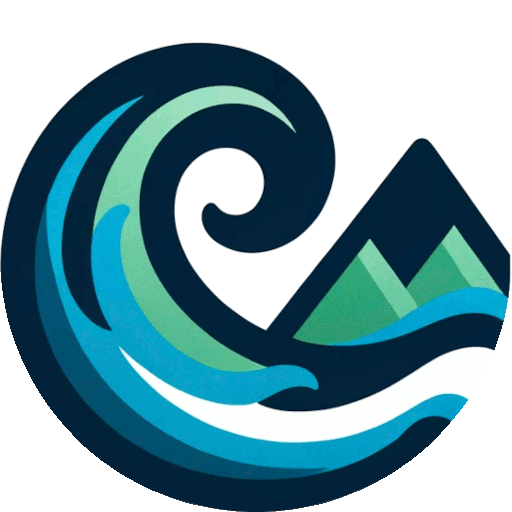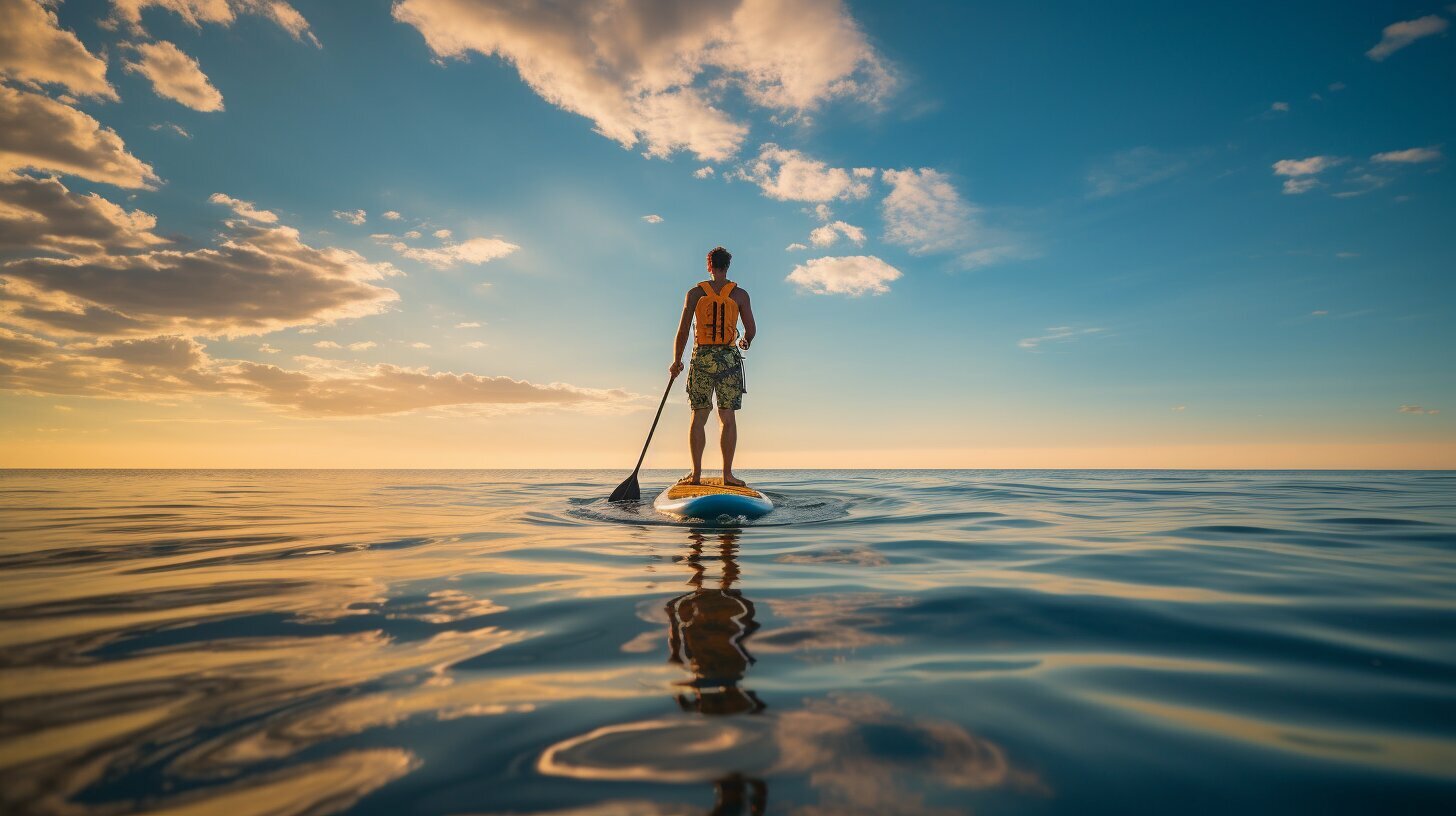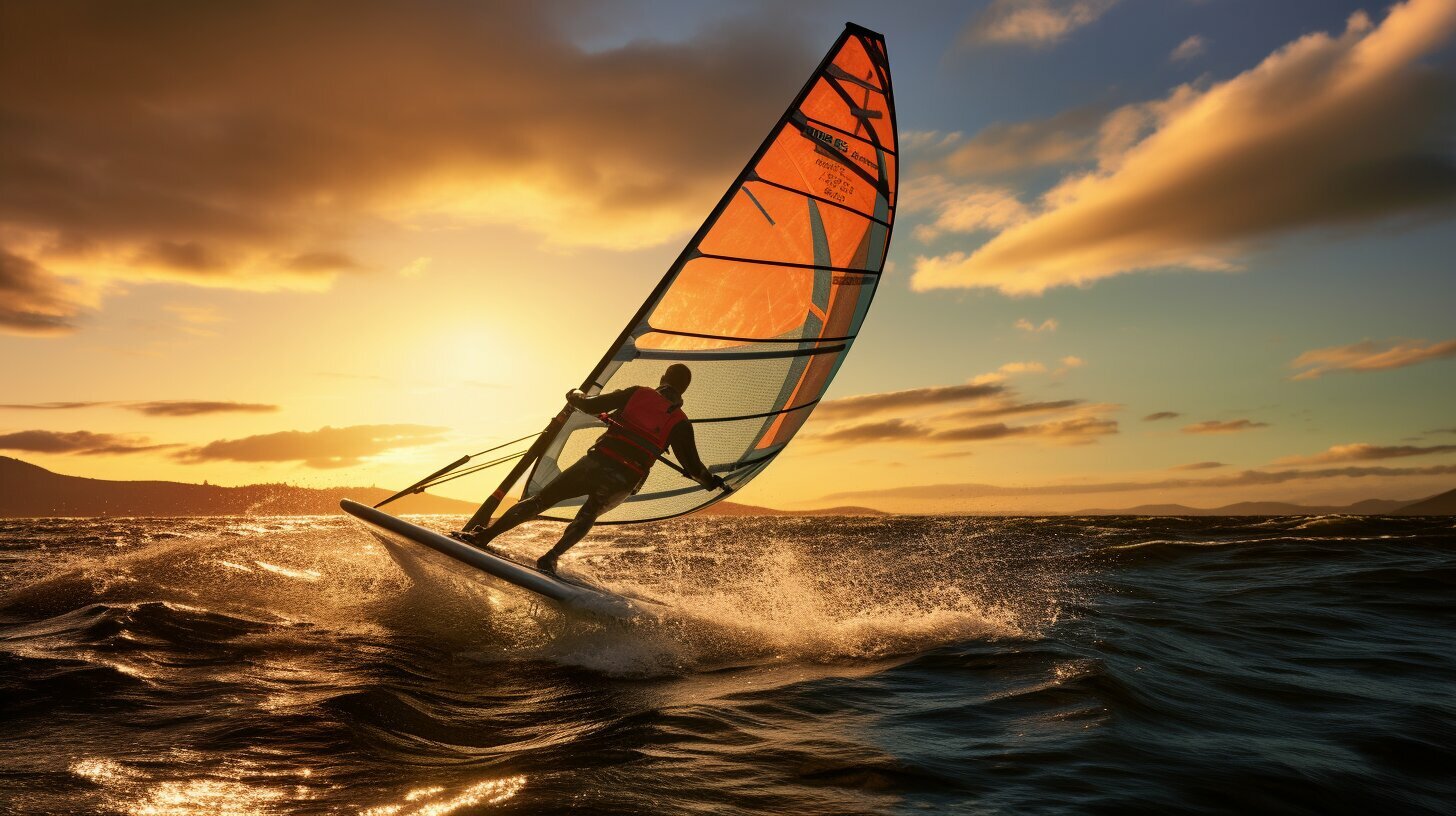Are you ready to embark on an exciting new hobby? Paddleboarding is a fun water sport that’s perfect for beginners. Not only is it an excellent way to enjoy the outdoors and get some exercise, but it’s also a great way to connect with nature and enjoy some peace and quiet.
If you’re new to paddleboarding, this guide will provide you with everything you need to know to get started. We’ll cover everything from how to choose the right equipment to mastering beginner-friendly paddleboarding techniques. So, let’s begin!
Key Takeaways
- Paddleboarding is a fun and exciting water sport that’s perfect for beginners.
- Choosing the right equipment and finding a beginner-friendly location is crucial for a successful paddleboarding experience.
- Proper safety precautions and paddleboarding techniques are essential for beginners to master.
- Joining paddleboarding lessons and setting personal goals can help beginners progress and improve their skills.
Getting Started with Paddleboarding
If you’re new to paddleboarding, it’s important to start with the basics. Paddleboarding can be a great way to enjoy the water, but it takes practice to get the hang of it. Here are some tips and techniques to help you get started:
Choosing the Right Equipment
When it comes to paddleboarding basics, the right equipment is essential. There are different types of paddleboards available, so it’s important to choose the one that suits your needs. For beginners, a wider board with more stability is recommended. Additionally, you’ll need a paddle, a personal flotation device (PFD), and appropriate clothing.
Disclosure: When you buy through links on our site, we may earn an affiliate commission.
Getting on the Paddleboard
When getting on the paddleboard, it’s important to do so in shallow water. Place the board in the water, and hold onto the sides to stabilize it. With one knee on the board, place your other foot on the board and stand up. Position yourself towards the center of the board for balance.
Proper Body Positioning
When on the board, the proper stance is key to maintaining balance. Keep your feet parallel and hip-width apart, with your toes pointed forward. Your knees should be slightly bent and your core engaged. Keep your head up and your gaze forward.
Basic Paddling Techniques
When paddling, hold the paddle with both hands shoulder-width apart and your arms straight. Dip the blade into the water and pull towards the back of the board. Rotate your torso and use your core for power. To turn, paddle on one side more than the other. To stop, hold the paddle still in the water.
With these paddleboarding techniques for beginners, you’ll be well on your way to mastering the waves. Practice makes perfect, so don’t be discouraged if you don’t get it right away. Keep at it, and soon you’ll be gliding through the water with ease.
Finding Beginner-Friendly Paddleboarding Locations
When you’re just starting out with paddleboarding, it’s important to choose beginner-friendly locations that offer calm and safe waters. You want to avoid areas with strong currents or large waves, as they can be challenging for beginners and potentially dangerous.
Look for paddleboarding spots that offer shallow waters, minimal boat traffic, and protected areas that provide a stable environment for you to hone your skills. Some popular beginner-friendly paddleboarding locations across the United States include:
| Location | Description |
|---|---|
| Coronado, California | This beautiful beach offers calm waters and stunning views, making it an ideal spot for beginners. |
| Lake Tahoe, Nevada/California | Crystal-clear waters and awe-inspiring scenery are the hallmarks of this popular paddleboarding destination. |
| Standley Lake, Colorado | This serene lake is a great spot for beginners to practice their paddleboarding skills without worrying about large waves or boat traffic. |
Keep in mind that some locations may have specific regulations or restrictions regarding paddleboarding, so it’s always a good idea to check with local authorities before heading out.
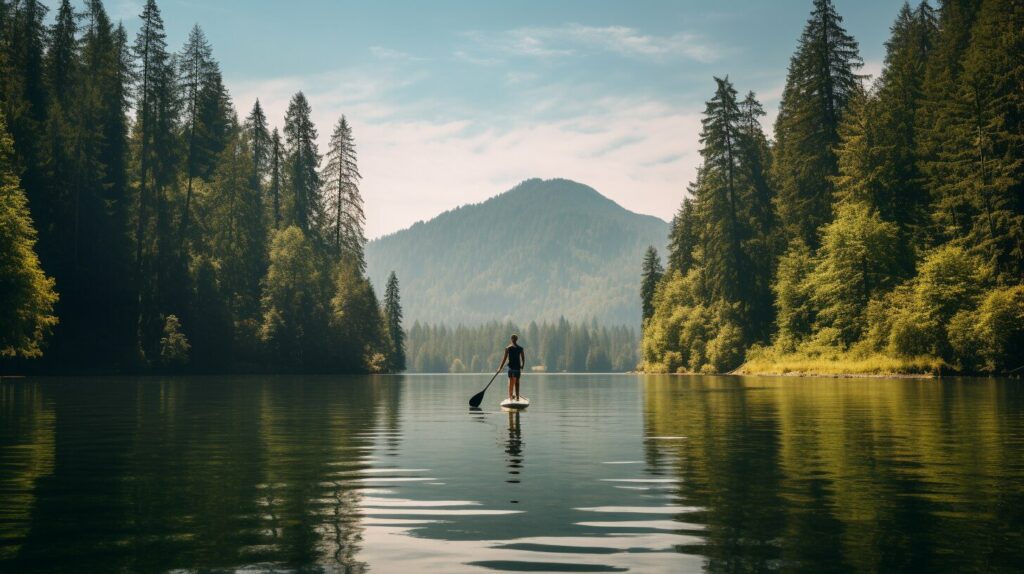
Paddleboarding Safety Tips for Beginners
If you’re new to paddleboarding, safety should be your top priority. The following paddleboarding safety tips for beginners will help you stay safe on the water, protect yourself, others, and the environment.
Wear a Personal Flotation Device (PFD)
Always wear a PFD when paddleboarding. Even if you’re a good swimmer, unexpected situations can occur, and wearing a PFD can save your life. Make sure the PFD fits comfortably and snugly on your body and is approved by the US Coast Guard.
Check Weather Conditions
Before going paddleboarding, check the weather forecast and avoid paddling during storms, rough winds or thunderstorms. Strong currents, unexpected waves or sudden rain can be dangerous for beginners, so choose calm days with clear weather for your first paddleboarding experiences.
Stay in Designated Areas
Choose designated paddleboarding areas that are safe, marked, and away from high boat traffic. Avoid crossing areas reserved for boats or watercrafts, and never paddle in areas marked with “no paddleboarding” signs.
Keep a Safe Distance from Others
Always be aware of your surroundings and keep a safe distance from other watercraft, swimmers, or other water activity areas. Give other watercraft the right of way, and always remember that larger vessels have a harder time seeing paddleboards.
Learn Basic Rescue Techniques
It’s unlikely that you’ll need to put yourself in a rescue situation, but it’s good to know basic rescue techniques just in case. Learn how to safely get back on your paddleboard after falling, how to help someone else in the water, and how to call for help if needed.
Know How to Swim
Last but not least, know how to swim before going paddleboarding. Even if you wear a PFD, you may still need to swim short distances, so it is important to be comfortable in the water. Take swimming lessons or practice swimming in calm water before paddleboarding.
By following these paddleboarding safety tips for beginners, you can stay safe on the water and enjoy a fun and relaxing paddleboarding experience.
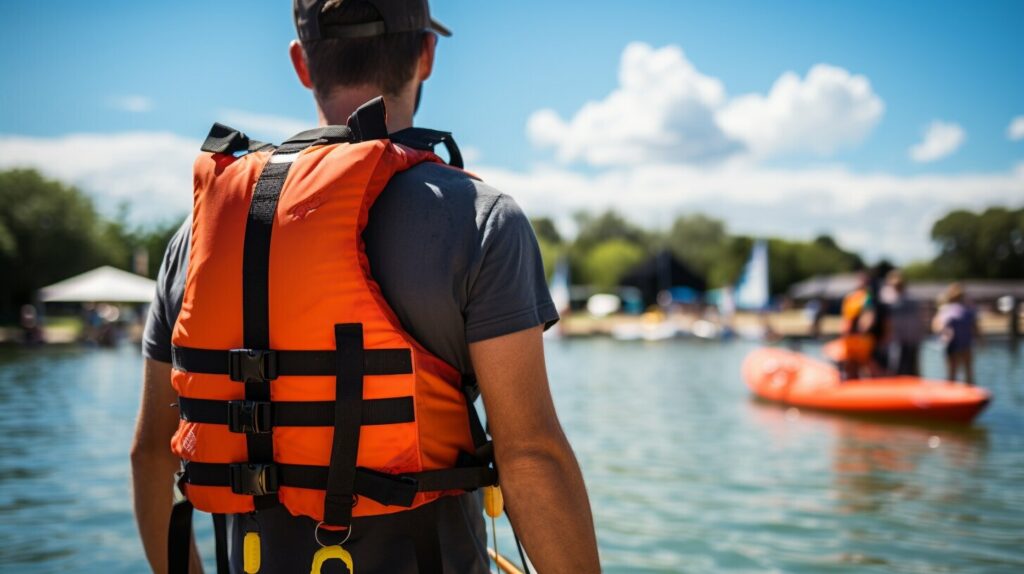
Mastering the Paddleboarding Techniques
Once you have the basic equipment and paddling techniques down, it’s time to master the art of paddleboarding. Follow these steps to improve your skills and maneuver your board effectively:
- Hold the paddle correctly: Place one hand on the top of the paddle and the other on the center of the shaft. Keep your hands shoulder-width apart and your elbows slightly bent.
- Perform basic strokes: For forward motion, dip the paddle into the water and pull it towards your ankle, keeping the blade parallel to the board. Alternate sides to maintain momentum. To turn, perform a forward stroke on one side and a backward stroke on the other.
- Master the pivot turn: To make a quick turn without losing too much speed, shift your weight to the back of the board and drag the paddle behind you, using it as a rudder to turn the board.
- Practice balance: Experiment with shifting your weight forward and backward on the board to maintain balance and control.
- Try new techniques: Once you feel comfortable with the basics, try more advanced techniques such as cross-bow strokes or step back turns to challenge yourself and improve your skills.
Remember to take breaks and practice regularly to improve your paddleboarding techniques. Don’t be afraid to try new things and explore different locations to keep your paddleboarding experience exciting and enjoyable.

Understanding Paddleboarding Gear for Beginners
Before you hit the water with your paddleboard, it’s essential to equip yourself with the right gear. Having the right equipment and clothing will ensure your safety, comfort, and enjoyment on the water. Here is a breakdown of the essential paddleboarding gear for beginners:
| Equipment | Description |
|---|---|
| Paddleboard | The first thing you’ll need is a paddleboard. Choose a beginner-friendly board with a width of at least 30 inches and length around 10-12 feet. An inflatable board can be a convenient choice since it’s easy to transport and store. |
| Paddle | You’ll also need a paddle that suits your height and paddling style. A suitable paddle should be 6 to 8 inches taller than your height. Choose a paddle with a blade size that matches your strength and experience level. |
| Ankle Leash | An ankle leash is essential because it attaches you to the board, preventing it from drifting away if you fall off. Choose an adjustable leash that comfortably fits around your ankle. |
In addition to the equipment listed above, you should also consider the clothing you wear while paddleboarding. Here are some clothing options to keep in mind:
- Swimsuit or wetsuit (depending on water temperature)
- Rashguard or lightweight shirt
- Sun hat or visor
- Sunscreen with a high SPF
- Sunglasses with UV protection
Make sure to choose clothing that is comfortable and allows you to move freely. Keep in mind that you may get wet, so quick-drying fabrics are recommended.
Using the right gear is crucial for beginner paddleboarders. Investing in beginner-friendly equipment and clothing will ensure you stay safe, comfortable, and confident on the water.
Benefits of Paddleboarding for Beginners
If you’re looking for a fun and rewarding way to get out on the water and work on your physical fitness, paddleboarding is an excellent choice for beginners. Not only is it a low-impact workout that’s gentle on your joints, but it also provides an opportunity to connect with nature and explore new places. Here are some of the top benefits of paddleboarding for beginners:
- Physical fitness: Paddleboarding provides a full-body workout that engages your core, arms, back, and legs. It’s a great way to improve your balance, strength, and cardiovascular health.
- Mental well-being: Being out on the water can be a calming and meditative experience, reducing stress and anxiety. It can also boost your mood and energy levels.
- Stress relief: Paddleboarding can be a great way to disconnect from technology and the stresses of daily life. It’s a chance to get some fresh air and enjoy the beauty of nature.
- Exploration: Paddleboarding can take you to new places and give you a unique perspective on the natural world. Whether you’re on a lake, river, or ocean, there’s always something new to discover.
Overall, paddleboarding is a versatile and enjoyable water sport that can be adapted to your skill level and interests. Whether you’re looking for a relaxing way to enjoy the scenery or a challenging workout, it’s a great option for beginners.
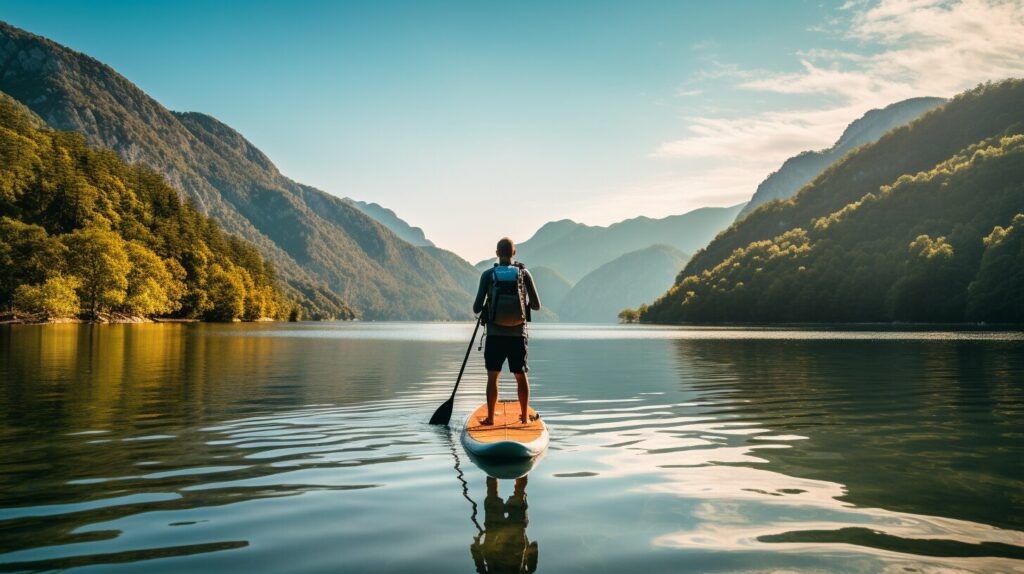
Joining Paddleboarding Lessons for Beginners
If you’re eager to learn paddleboarding and want to ensure that you learn the proper techniques and safety precautions, joining paddleboarding lessons for beginners is a great idea. Professional instructors can provide focused, one-on-one attention and valuable guidance to help you build your skills.
During paddleboarding lessons, you can learn the basics of body positioning, balance techniques, paddling strokes, and turning. Instructors will also provide you with essential safety tips, such as how to avoid potential hazards on the water and how to use rescue techniques if necessary.
Many paddleboarding schools and water sports centers offer lessons for beginners. Group sessions are an excellent option if you prefer to learn in a social setting and share the experience with other beginners. Alternatively, if you prefer a more personalized approach, consider individual trainers for more focused attention and tailored instruction.
When choosing a paddleboarding lesson for beginners, it’s important to prioritize safety and quality of instruction. Make sure the instructors are certified and have extensive experience in teaching beginner classes. Also, read reviews and ask for referrals from friends or family members who have taken lessons before.
With proper guidance and a positive attitude, paddleboarding lessons for beginners can help you quickly build your skills and confidence on the water.

Best Paddleboards for Beginners
Choosing the right paddleboard is crucial for a successful and enjoyable paddleboarding experience. As a beginner, you will want to find a board that is stable, easy to maneuver, and appropriate for your body weight and size. Here are some of the best paddleboards for beginners to get started:
| Paddleboard | Price | Features |
|---|---|---|
| Atoll 11′ Inflatable Stand Up Paddleboard | $$$ | Stable, durable, and easy to inflate |
| iRocker Nautical Inflatable Paddleboard | $$ | Lightweight, easy to carry, and suitable for all levels |
| Tower Adventurer Inflatable Paddleboard | $$ | Extra-wide and stable, suitable for beginners and heavy riders |
| Surftech Universal Bamboo Stand Up Paddleboard | $$$ | Durable and eco-friendly construction, easy to handle and maneuver |
When choosing a paddleboard, consider factors such as the type of paddleboarding you will be doing (flatwater, waves, or both), your weight and size, and your storage space. Some paddleboards may be more suitable for specific types of paddleboarding or riders.
It is also important to note that paddleboarding gear can be expensive, so if you are not ready to invest in your own equipment, consider renting gear or taking lessons that include equipment rental.
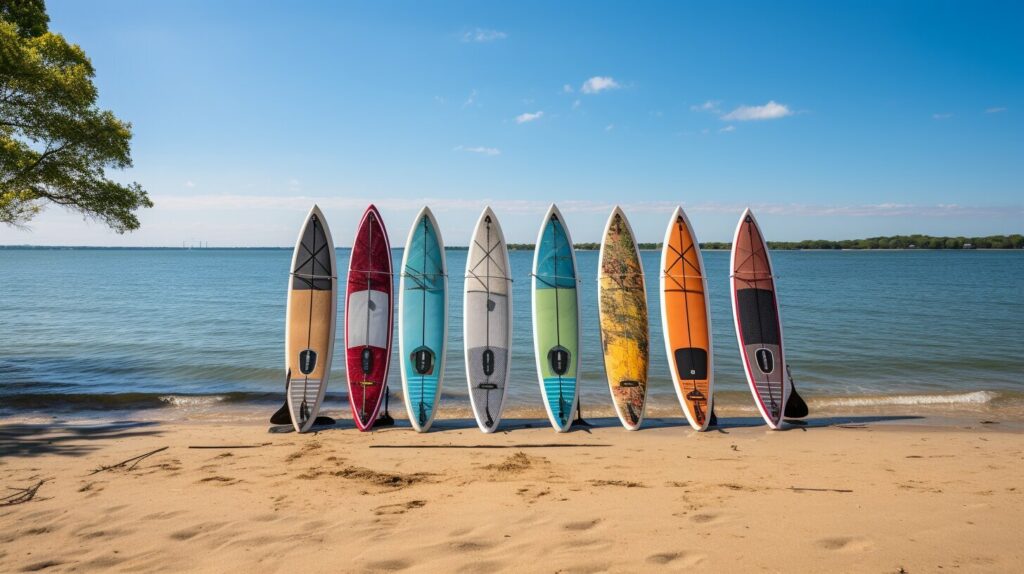
Tips for Progressing as a Beginner Paddleboarder
Now that you’ve mastered the basics of paddleboarding, it’s time to take your skills to the next level. Here are some beginner paddleboarding tips to help you progress:
- Challenge Yourself: Test your limits by trying new paddleboarding techniques or exploring different locations. This will help you build confidence and improve your skills.
- Set Goals: Having specific goals in mind can help you stay motivated and focused. Consider setting goals related to distance, speed, or mastering a certain paddleboarding technique.
- Seek Professional Instruction: Professional instructors can provide valuable feedback and guidance on how to improve your paddleboarding technique. Consider taking a lesson or two to fine-tune your skills.
- Practice Consistently: The more you practice, the better you will become. Set aside time regularly to paddleboard, even if it’s just for a short period. Consistent practice will help you build muscle memory and improve your overall performance.
Remember to always prioritize safety, and don’t be afraid to challenge yourself and try new things. With dedication and practice, you’ll soon be a confident and skilled paddleboarder.
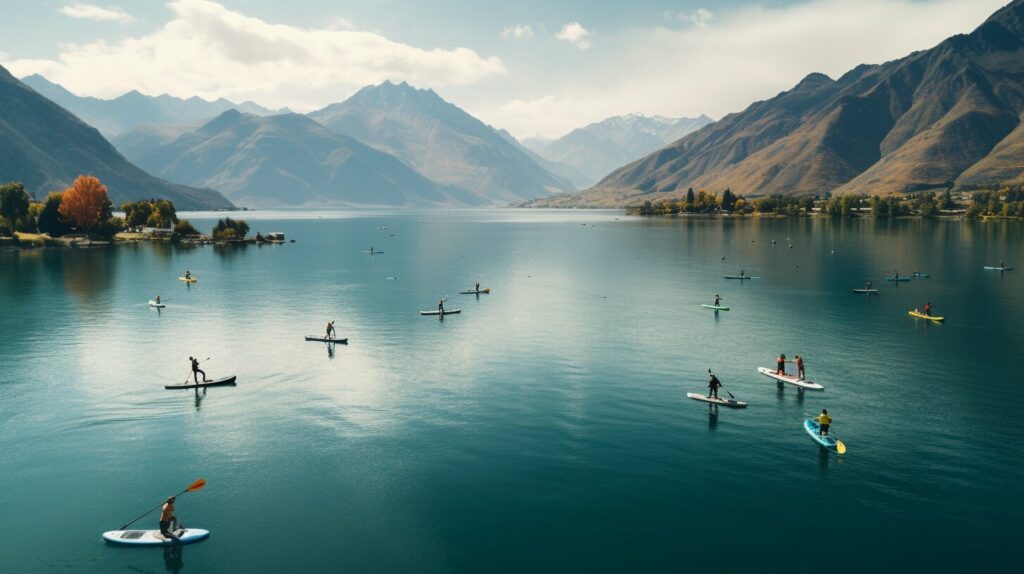
Paddleboarding Etiquette for Beginners
As you begin your paddleboarding journey, it’s important to be mindful of proper etiquette on the water. Respecting other water users and the environment will make for a more enjoyable experience for everyone. Here are some key tips to keep in mind:
- Give way to other watercraft: When in doubt, give other boats and watercraft the right of way. Stay alert and aware of your surroundings, especially in busy waterways.
- Communicate with other paddleboarders: Use hand signals or verbal communication to indicate your intended direction or movements. This will help avoid collisions and keep everyone safe.
- Respect marine life: Avoid disturbing or harming wildlife and marine ecosystems. Paddle quietly and avoid getting too close to animals or plants.
- Dispose of trash properly: Do your part to keep the water and shoreline clean by properly disposing of any trash or waste. Avoid throwing anything overboard.
It’s also important to be aware of any local regulations or guidelines specific to the area where you are paddleboarding. Some locations may have designated areas for paddleboarding or restrictions on certain water activities.
By following these etiquette tips, you can enjoy a safe and respectful paddleboarding experience for both yourself and others.
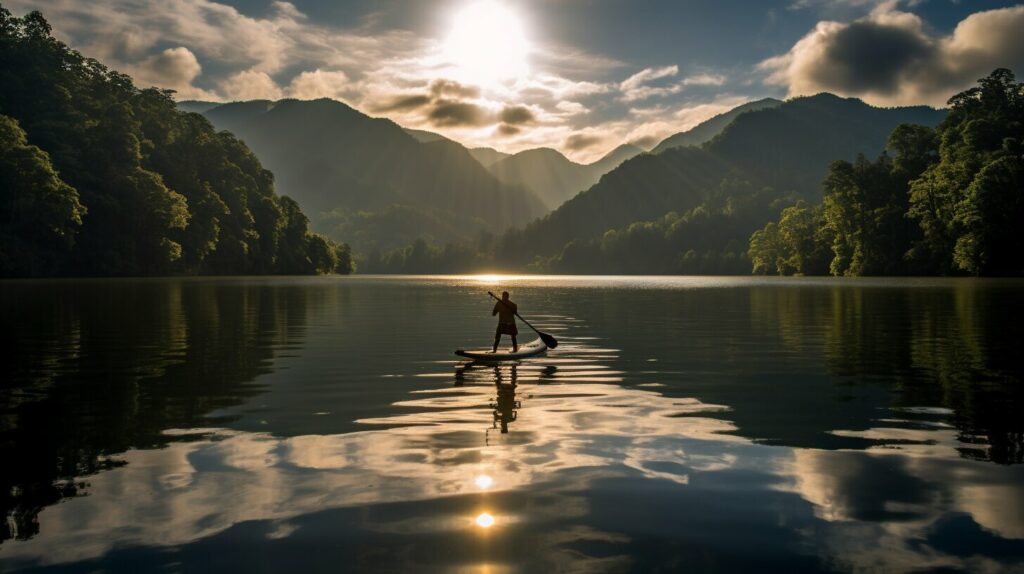
Conclusion
Now that you’ve learned the basics of paddleboarding, you’re ready to hit the water and start your paddleboarding journey as a beginner. Remember to stay safe, have fun, and enjoy the numerous benefits that come with this exciting water sport.
With regular practice and dedication, you’ll master the paddleboarding techniques, progress to more challenging locations, and continue to improve your skills. Don’t forget to follow proper paddleboarding etiquette and respect other water users and the environment.
If you’re ever feeling stuck, remember that joining paddleboarding lessons for beginners is a great way to receive professional instruction and guidance. Additionally, choosing the right gear, paddleboard type, and location can make a significant difference in your paddleboarding experience.
Whether you’re looking for a full-body workout, stress relief, or simply a fun and unique way to connect with nature, paddleboarding for beginners has something to offer. So, grab your gear, hit the water, and enjoy your beginner paddleboarding adventure!
FAQ
Q: What is paddleboarding?
A: Paddleboarding, also known as stand-up paddleboarding (SUP), is a water sport where you stand on a paddleboard and use a paddle to move through the water.
Q: Is paddleboarding difficult for beginners?
A: Paddleboarding can be challenging for beginners, but with proper instruction and practice, it is a sport that can be mastered by anyone.
Q: What equipment do I need for paddleboarding?
A: Basic paddleboarding equipment includes a paddleboard, paddle, personal flotation device (PFD), and appropriate clothing for water activities.
Q: How do I choose the right paddleboard for beginners?
A: When choosing a paddleboard for beginners, consider factors such as stability, size, weight capacity, and the type of paddling you plan to do (e.g., recreation, touring, surfing).
Q: Are there specific locations suitable for beginner paddleboarders?
A: Yes, beginner-friendly paddleboarding locations usually have calm and shallow waters, protected areas, and minimal boat traffic. Look for designated paddleboarding spots or ask locals for recommendations.
Q: What safety precautions should I take as a beginner paddleboarder?
A: It is essential to wear a personal flotation device (PFD), be aware of weather conditions, maintain a safe distance from other watercraft, and learn basic rescue techniques. Knowing how to swim is also important.
Q: How can I master paddleboarding techniques as a beginner?
A: Practice proper body positioning, learn how to hold the paddle, and familiarize yourself with basic strokes. Focus on turning, stopping, and maneuvering the paddleboard effectively.
Q: What gear do I need as a beginner paddleboarder?
A: As a beginner, you will need a paddleboard, paddle, ankle leash, and appropriate clothing. Choose gear that suits your preferences and needs.
Q: What are the benefits of paddleboarding for beginners?
A: Paddleboarding offers physical fitness, mental well-being, stress relief, and a connection with nature. It is a great way to explore waterways and enjoy the outdoors.
Q: Should I join paddleboarding lessons as a beginner?
A: Taking paddleboarding lessons as a beginner has numerous advantages. Professional instructors can teach you proper technique, safety guidelines, and help you build confidence on the water.
Q: What are the best paddleboards for beginners?
A: There are various paddleboard options for beginners based on budget, body type, and skill level. Look for boards that offer stability, durability, and ease of use.
Q: How can I progress as a beginner paddleboarder?
A: To progress as a beginner paddleboarder, challenge yourself, set goals, and explore new techniques and locations. Continual practice and dedication will improve your skills.
Q: What paddleboarding etiquette should beginners follow?
A: Beginners should respect the right of way, use communication signals, and be mindful of the environment. Avoid disturbing marine life and ecosystems, and be considerate of other water users.
